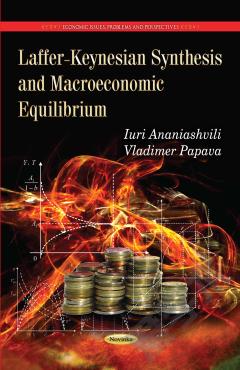Laffer-Keynesian Synthesis and Macroeconomic Equilibrium
Many considerations are involved in examining the regularities regarding how changes in the tax burden affect national budget revenues, on the one hand, and how these changes influence economic activities, on the other hand. This book will explain how these affect employment and output rates. It is equally important to examine how government spending influences economic growth. The Keynesian model of aggregate demand gives a quite comprehensive picture of how the tax burden influences economic growth. Though this model has been the subject of many studies and is well explored, it can be said that its analytical capabilities have not yet been fully examined. For instance, based on the study of key characteristics of one of the modified versions of the above-mentioned model, it has been established that the impact of the tax burden on aggregate demand cannot be determined unequivocally. Usually, an increase in the tax burden is one means of decreasing aggregate demand, but, at the same time, an increase in the tax burden may trigger an increase in aggregate demand under certain conditions. It is notable that the tax burden affects both the effectiveness of using productive resources, that is, production technology, and the level of resource usage. Both of these aspects of the tax burden are important, but the impact on the level of resource usage is especially important. The Laffer Effect refers to the result of this impact and it should be taken into consideration when working out a fiscal policy that boosts economic growth. In order to achieve stable economic growth, it is extremely important to establish levels of the tax burden and government spending that will ensure optimization of the level of resource usage. Keynesian models deal with the situation when aggregate supply is not dependent on tax rates, while aggregate demand, especially the part of it that relates to consumption, is the function of taxes. Supply-side economics also considers only a single aspect of the tax issue in the Laffer Curve, which emphasizes the impact of the tax rate on aggregate supply. The single-sidedness of the above theories can be overcome by the Laffer-Keynesian synthesis. This book focuses on the model of macroeconomic equilibrium that allows for this synthesis, in which aggregate demand and aggregate supply are represented as functions of the tax burden.
{{comment.content}}








 京公网安备 11010802027623号
京公网安备 11010802027623号